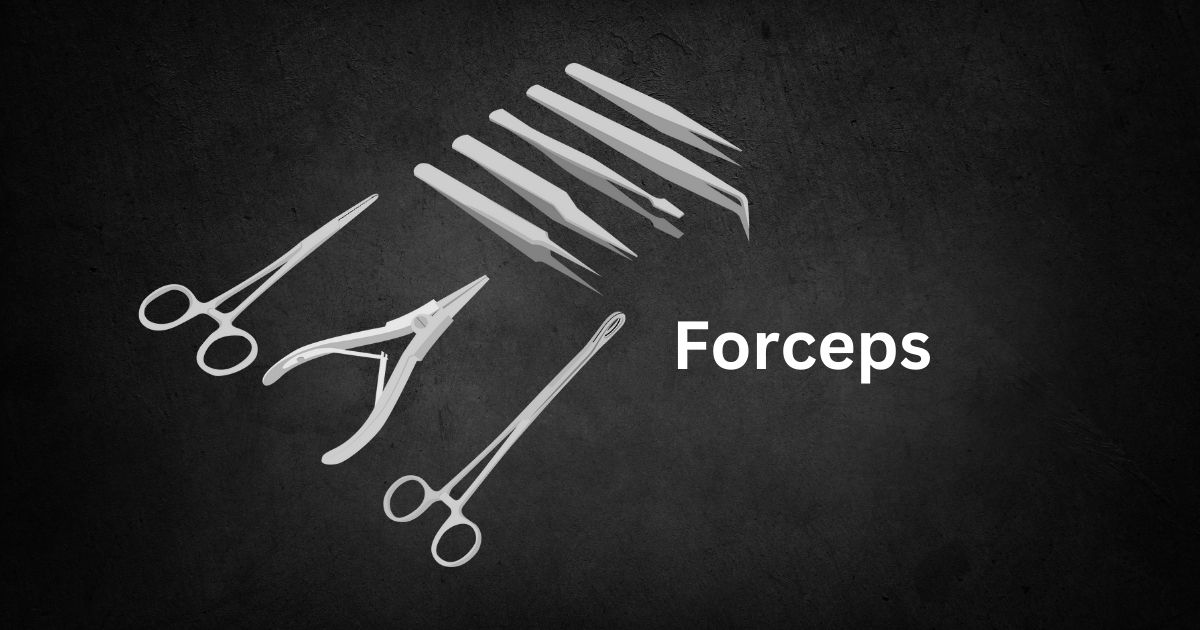Forceps are versatile tools used in medical, surgical, and laboratory settings. Resembling tweezers or tongs, they are designed for grasping, holding, or manipulating objects that are otherwise difficult to handle with bare hands. From delivering babies to aiding in intricate surgeries, forcep play an essential role in healthcare.
What Are Forceps?
Forcep are handheld instruments that provide precision and control for various medical procedures. They are typically made from stainless steel to ensure durability, ease of sterilization, and resistance to corrosion. Forceps come in many shapes and sizes, each suited to a specific application.
History of Forceps
The use of forceps dates back centuries, with early versions appearing in ancient Greek and Roman medicine. By the 16th century, obstetric forceps were developed to assist with childbirth, revolutionizing maternal care. Over time, their design evolved to cater to various medical disciplines.
Types of Forcep
Forcep, are classified based on their function and design. Here are some common types:
Surgical Forcep
These forcep are used in surgeries to hold tissues, control bleeding, or handle surgical tools. Examples include:
Hemostatic forcep: Designed to clamp blood vessels and prevent bleeding.
Thumb forcep: Used to grasp tissues during procedures.
Obstetric Forcep
Obstetric forcep assist in childbirth by gently guiding the baby out during delivery. They are designed to minimize trauma to both mother and baby.
Dressing Forceps
Used in wound care, dressing forcep help in applying or removing bandages and dressing materials.
Dental Forceps
Dental forcep are specialized for tooth extractions and other oral procedures.
Laboratory Forceps
Laboratory forcep are used to handle delicate materials, such as tissue samples or chemicals, in laboratory settings.
Key Features of Forceps
Forcep are designed with specific features to ensure precision and safety during use:
Ergonomic handles for comfortable grip.
Spring mechanisms to maintain tension and control.
Serrated tips for better grip on tissues or objects.
Variety in length to suit different depths and applications.
Materials Used in Forceps
Most forcep are crafted from stainless steel due to its:
High resistance to rust and corrosion.
Ability to withstand repeated sterilization.
Strength and durability, even under pressure.
Applications of Forceps
In Surgery
Forcep are indispensable in surgeries, aiding in tasks like suturing, tissue manipulation, and instrument handling. Their precision ensures minimal tissue damage and quicker recovery.
In Childbirth
Obstetric forcep have been pivotal in assisting complicated deliveries. When used correctly, they help avoid cesarean sections and reduce delivery time.
In Dentistry
Dental forcep make tooth extractions easier and more efficient by providing a firm grip and precise control.
In Research and Laboratories
Laboratory forcep handle sensitive samples and tools with precision, ensuring accuracy in experiments.
In Emergency Care
In emergency settings, forcep assist in removing foreign objects, stopping bleeding, or cleaning wounds.
Maintenance and Sterilization of Forceps
Proper care and maintenance of forcep are critical to ensure their functionality and longevity:
Cleaning: Remove visible debris immediately after use.
Sterilization: Use autoclaves or chemical sterilization to kill bacteria and pathogens.
Inspection: Regularly check for damage, such as bent tips or broken springs.
Advantages of Using Forceps
It offer numerous benefits, including:
Enhanced precision during delicate procedures.
Reduced risk of contamination when handling sterile materials.
Versatility across medical disciplines.
Challenges and Misuse of Forceps
While forcep are invaluable tools, improper use can lead to complications, such as:
Tissue damage due to excessive pressure.
Infection from inadequate sterilization.
Incorrect application in childbirth leading to maternal or neonatal injury.
Innovations in Forceps Design
Modern forcep are being designed with improved ergonomics, lighter materials, and better grip mechanisms. Some are even equipped with sensors for enhanced precision in robotic-assisted surgeries.
Conclusion
Forceps are a cornerstone of medical practice, reflecting both the history and advancements in healthcare. From surgical precision to emergency care, these tools exemplify the importance of innovation and craftsmanship in medicine. Proper use and maintenance of forcep ensure their effectiveness, making them an indispensable part of any medical toolkit.
FAQs
1. What are the most common materials used in forceps?
Most forcep are made from stainless steel for its durability, rust resistance, and ease of sterilization.
2. Can forcep be reused?
Yes, many forcep are reusable after proper cleaning and sterilization. Disposable forceps are also available for specific applications.
3. Are forcep only used in medicine?
No, It are also used in laboratories, dentistry, and even for handling delicate objects in non-medical settings.
4. How are obstetric forcep different from surgical it?
Obstetric it are specifically designed for assisting in childbirth, while surgical forcep are used in general medical procedures to handle tissues or control bleeding.
5. How do I ensure my forceps last longer?
Clean and sterilize it after each use, store them in a dry place, and inspect them regularly for wear or damage.

